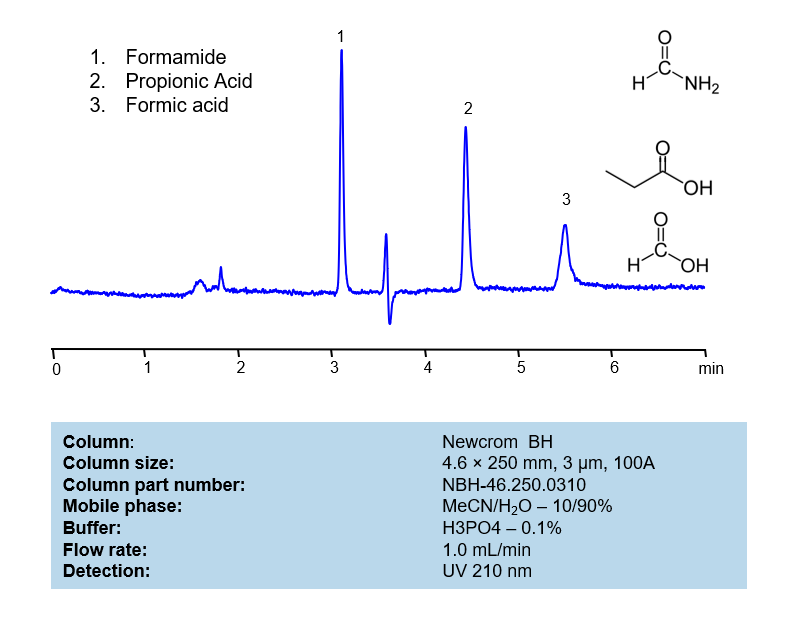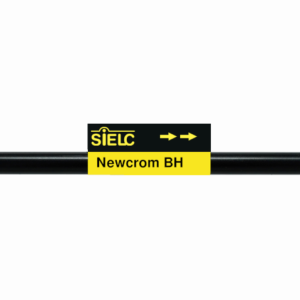Separation type: Liquid Chromatography Mixed-mode
High Performance Liquid Chromatography (HPLC) Method for Analysis of Formamide, Propionic Acid, Formic Acid
Formamide is a popular industrial solvent with a wide variety of applications, including in the manufacturing of drugs, herbicides, pesticides, as a paper and fiber softener, and as a solvent for a plethora of ionic compounds. Propionic acid is a popular antifungal and antibacterial compound commonly used in food production as a preservative. Formic Acid is a very popular organic acid with a plethora of industrial applications, including as an agricultural preservative, a key component in fuel cells, and as an ionic modifier in HPLC analysis. These 3 organic acids can be retained, separated, and analyzed on a mixed-mode Newcrom BH column with a mobile phase consisting of water, Acetonitrile (MeCN), and Phosphoric acid (H3PO4). This analytical method can be UV detected at 210 nm with high resolution and peak symmetry.
| Column | Newcrom BH, 4.6×250 mm, 3 µm, 100A |
| Mobile Phase | MeCN/H2O – 10/90% |
| Buffer | H3PO4 – 0.1% |
| Flow Rate | 10 ml/min |
| Detection | UV 210 nm |
| Class of Compounds | Acid, Hydrophilic |
| Analyzing Compounds | Formamide, Propionic Acid, Formic Acid |
Application Column
Newcrom BH
The Newcrom columns are a family of reverse-phase-based columns. Newcrom A, AH, B, and BH are all mixed-mode columns with either positive or negative ion-pairing groups attached to either short (25 Å) or long (100 Å) ligand chains. Newcrom R1 is a special reverse-phase column with low silanol activity.
Select optionsFormic acid
Propionic acid






